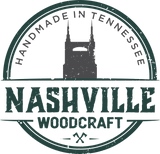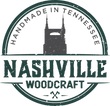Wood Working FAQ
What is a cross cut?
When it comes to cutting lumber, cut types are distinguished by their relationship to the grain direction within the wood. All wood has grain, and that grain is going to run in some direction. In most lumber, that grain is going to run the length of the board. That being said, a cross cut is when you cut the wood “across” the grain, perpendicular to the direction that the wood grain is running.
What is a rip cut?
A rip cut is the counterpart to the cross cut. Often done on the table saw or cabinet saw - when you make a rip cut, you are cutting in the same direction as the grain of the wood, which often means that the wood is being cut down the length of the board, producing thinner, dimensioned boards.
What is a round-over edge?
A round over edge is simply just a rounded edge on the piece of woodwork in places that have a 90 degree angle. Think of the top and bottom edges of a butcher block for example, where you’ll notice those smooth rounded edges. This edge is produced using a router table or hand router, which is basically just a large motor that spins a cutting bit very fast. The edges are run against the spinning bit, and the material is removed to produce the soft, rounded edges. In this case, a round-over bit is used in the router. The edges then often get sanded by hand for that factory smooth finish.
What does it mean when something is “routed” in?
Not sure if the grammar is correct on this one, but when a woodworker is referring to “routing” something into the piece of work, they simply mean that they’re going to be using a tool called a router table, or hand router to produce some sort of cut within the wood. The router is a very versatile tool, so this term gets thrown around a lot.
What is a “glue-up”?
A glue-up is simply part of the assembly process for a piece of woodwork where wood glue is used to join pieces of wood together. Often times the glue up occurs about half way through the process of making the product, it happens after the wood has been processed and cut from it’s rough state, and before the finishing process. Once joints are carefully glued up, the piece gets clamped together with a bunch of wood clamps, so that all of the pieces are held in place while the glue dries.
Is wood glue really that strong?
Truth be told, the bond that is created from wood glue is actually stronger than the wood itself. That said, if the wood were to fracture and break at any point, it will almost never be on the glued up joint, but rather in the middle of the wood somewhere.
What is a wood joint?
A wood joint is simply just the place where two pieces of cut wood are joined together in some way. Wood joints exists everywhere. For example, if you have a wooden box, the corners where the sides come together will be the joint. If you have a large wooden kitchen table, the edges of the boards that run the length the table will be a long, length-wise joint.
Are lacquers considered a food safe finish?
No, lacquers are not a food safe finish and should not be used on wood products that will be coming into direct contact with food like a cutting board or anything else that you’ll be eating off of. That said though, it’s totally fine for food to be in the presence of woodwork that has been finished with lacquer. In fact, most kitchen tables are finished with lacquer as it’s very durable, repels water and stains, and looks very nice.
What goes into a food safe finish?
Food safe finish is produced out of products that are free of toxins that can harm the human body and are safe to come into direct contact with food. Nut oils, bees wax, and food grade mineral oils are common ingredients that go into food safe finishes.
What does it mean to “process the wood”?
Processing wood is simply the action of turning rough wood from a lumber mill or lumber yard into a dimensioned, smooth and workable piece of material. Processing the rough lumber requires the use of a wood planer and wood jointer. The jointer creates the straight edge of your typical board, and the planer shaves off the rough, course state of the lumber into a smooth and dimensioned surface.
What is “rough lumber”?
Rough lumber is how lumber comes out of the lumber mill or lumber yard. It starts as giant log, and then gets cut up into boards of whatever widths make sense given how wide the log is, and then into a bunch of different lengths, usually, 8, 10 or 12 feet long. The wood is considered “rough” in this state, because it is. It’s very course to the touch, does not have any smooth surfaces, and can be hard to see wood grain and wood patterns through.
Can you buy rough lumber at Lowe’s or Home Depot?
No. Rough lumber comes from lumber yards and specialty lumber stores. Most hardwoods come in a rough state from a lumber yard, and are process by the woodworker into a state that suitable for producing woodwork.
What is “surfaced” lumber?
Surfaced lumber is lumber that has been somewhat processed by either a lumber mill or a woodworker. It just means that the woods has been sent through a wood planer or other machine that makes the surface square, even and mostly smooth.
What is the “finishing" process?
The finishing process is the stage of production at which a wood finish is applied to the woodwork. The finish could be anything from food grade nut oil finish, to shellac, lacquer or danish oil. It’s the stage at which the look of the piece of woodwork will start to deepen and look beautiful as the grains are exposed and start popping. The finishing process is often the last stage of production, and depending on the finish being applied, could take several days to complete as several coats of finish are often applied to a piece of work, and each coat must harden and cure before the next coat may be applied.
What types of sheen can you get with a finish?
Finishes come in usually four different types of sheen, which basically just determines it’s texture and amount of shine. In order least to most brilliance in shine, it goes matte, satin, semi-gloss, glossy.



